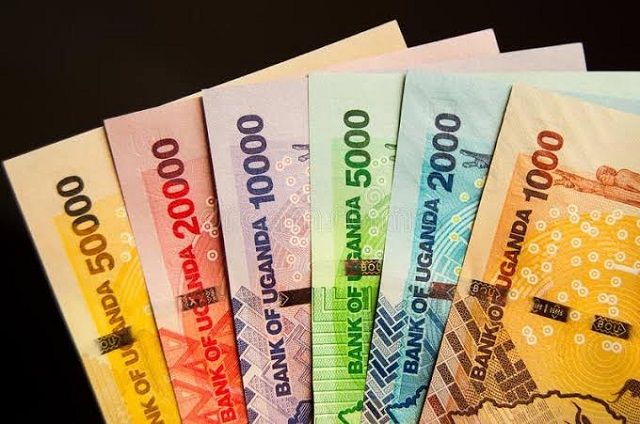
Appreciation was mainly driven by inflows from offshore investors, NGOs, coffee export receipts and non-financial institutions amidst demand from oil
Kampala, Uganda | THE INDEPENDENT | Uganda Shillings current strength against the United States Dollar is causing discomfort within the business community, considering how it might boost or affect their operations.
The Uganda Shilling remained stable since mid-January when the general elections were conducted, but since mid-April, it has quickly appreciated against the dollar. By mid-April, the local currency had appreciated by 2.9 percent compared to the same period in 2020, according to the Bank of Uganda.
“The shilling appreciated by 2.9% year-on-year and 0.1 percent month-on-month to a mid-rate of 3662.9/US$ in March 2021, compared to an appreciation of 0.3 percent year on year and 0.7 percent month-on-month in February 2021”, says the central bank.
By midday Friday, the exchange rate had further fallen to 3,550.8 buying and 3,560.8 selling, reflecting a shilling appreciation of 5.3% from the same period last year.
In their Monetary Policy Report for April, the bank attributes this to increased inflows and higher local demand for the shilling.
“The appreciation was mainly driven by inflows from offshore investors, NGOs, coffee export receipts and non-financial institutions amidst demand from oil, manufacturing and telecom sectors.”
A low cost of the US Dollar helps boost production especially when the producer is importing raw materials and other inputs, which become cheaper when purchased using the dollar.
This according to Uganda Manufacturers Association Executive Director, Daniel Birungi, leads to the low cost of production and should lead to lower consumer prices.
However, Uganda’s foreign exchange rate usually fluctuates in short periods (volatility), especially since it is largely affected by external factors like the global commodity process, a rise or fall in donor inflows, among others.
The BoU usually comes into the market to ensure reduced volatility, by either selling or buying out dollars, so that the forex rate moves more stably.
The volatility of the foreign exchange rate is a disruption for investors because it affects their planning when the movement of the cost of the exchange rate cannot be easily forecast.
If for example the appreciation of the shilling is also attributed to the developments in the oil and gas sector, this could last longer because the sector is expected to continue attracting foreign investments for a long.
Birungi says the benefits of strong shillings will be realized if it is sustained.
A sustained strength of the local currency is also not desirable for exports because much as the products will have been produced cheaply, they become expensive to export. Buyers in the international market have to get more dollars than before to buy the same product.
A tonne that the exporter sells for $200 in the U.S. market would result in the exporter receiving 712,000, other factors being constant.
If the Shilling weakens to 3,700 Shillings to one U.S. dollar, the exporter can now sell a tonne of coffee for $190 to receive the same amount of shillings (712,000).
The 5% depreciation in the shilling against the dollar has therefore improved the Ugandan exporter’s competitiveness in the U.S. market, though a seemingly lower return.
Celestine Babungi, the Managing Director Umeme agrees that a stronger shilling will also boost their returns if sustained because they buy many inputs in the dollar, especially the imported ones.
The Uganda shilling has in recent been the strongest currency in the region, with movements in the East African Community (EAC) partner state currencies relative to the US dollar being mixed in the quarter to February 2021.
“On average, the Tanzania Shilling was stable, slightly depreciating by 0.03 percent quarter-on-quarter to an average rate of TZS 2,298.5 per US dollar, while the Kenya Shilling and Rwanda Franc depreciated 0.4 percent and 1.1 percent respectively to an average of KES 109.7 and RWF 976.3 per US dollar,” the Monetary Performance Report says.
On annual basis, the Kenya Shilling and Rwanda Franc depreciated by 8.5 percent and 5.1 percent, respectively in February 2021, while the Tanzania Shilling depreciated slightly by 0.4 percent during the same period.
Only the Uganda shilling appreciated.
*****
URN
 The Independent Uganda: You get the Truth we Pay the Price
The Independent Uganda: You get the Truth we Pay the Price


